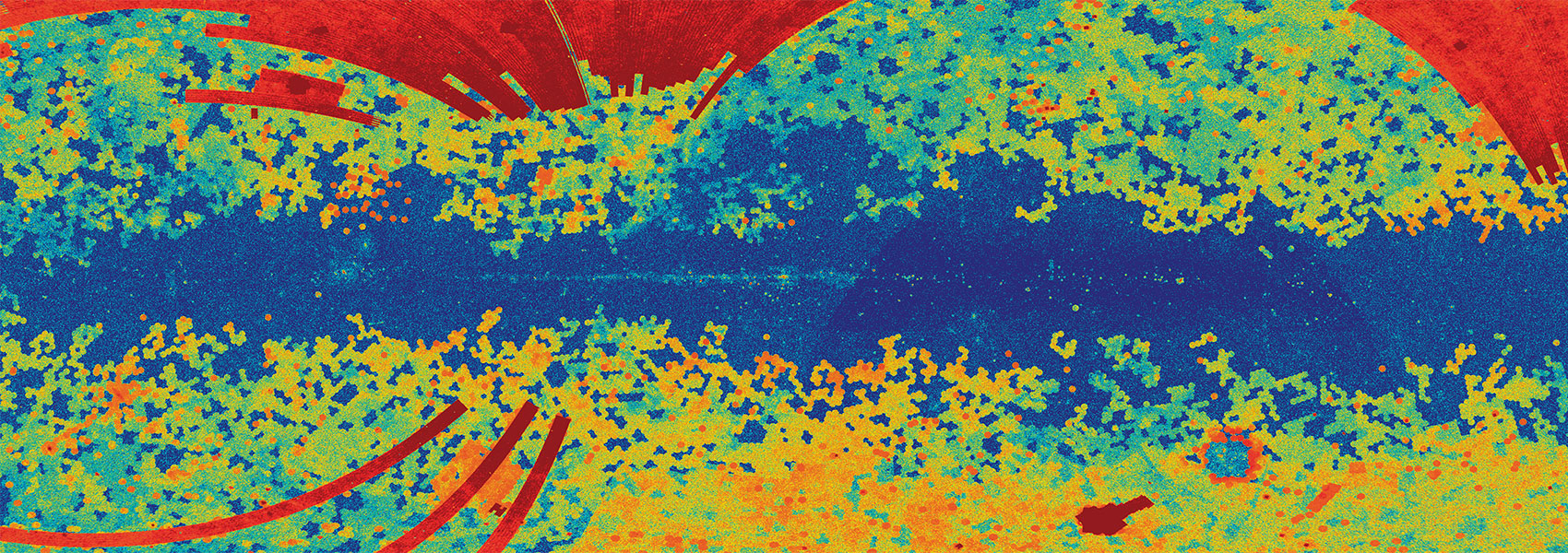April
2022
•
2022A&A...660A.138S
Authors
•
Srinivasaragavan, G. P.
•
Sfaradi, I.
•
Jencson, J.
•
De, K.
•
Horesh, A.
•
Kasliwal, M. M.
•
Tinyanont, S.
•
Hankins, M.
•
Schulze, S.
•
Ashley, M. C. B.
•
Graham, M. J.
•
Karambelkar, V.
•
Lau, R.
•
Mahabal, A. A.
•
Moore, A. M.
•
Ofek, E. O.
•
Sharma, Y.
•
Sollerman, J.
•
Soon, J.
•
Soria, R.
•
Travouillon, T.
•
Walters, R.
Abstract
•
Aims: We present a detailed analysis of SN 2020qmp, a nearby Type IIP core-collapse supernova (CCSN) that was discovered by the Palomar Gattini-IR survey in the galaxy UGC07125 (distance of ≈15.6 ± 4 Mpc). We illustrate how the multiwavelength study of this event helps our general understanding of stellar progenitors and circumstellar medium (CSM) interactions in CCSNe. We highlight the importance of near-infrared (NIR) surveys for detections of supernovae in dusty environments.
Methods: We analyze data from observations in various bands: radio, NIR, optical, and X-rays. We use optical and NIR data for a spectroscopic and spectro-polarimetric study of the supernova and to model its light curve (LC). We obtain an estimate of the zero-age main-sequence (ZAMS) progenitor mass from the luminosity of the [O I] doublet lines (λλ6300, 6364) normalized to the decay power of 56Co. We also independently estimate the explosion energy and ZAMS progenitor mass through hydrodynamical LC modeling. From radio and X-ray observations, we derive the mass-loss rate and microphysical parameters of the progenitor star, and we investigate possible deviations from energy equipartition of magnetic fields and electrons in a standard CSM interaction model. Finally, we simulate a sample of CCSNe with plausible distributions of brightness and extinction, within 40 Mpc, and test what fraction of the sample is detectable at peak light by NIR surveys versus optical surveys.
Results: SN 2020qmp displays characteristic hydrogen lines in its optical spectra as well as a plateau in its optical LC, hallmarks of a Type IIP supernova. We do not detect linear polarization during the plateau phase, with a 3σ upper limit of 0.78%. Through hydrodynamical LC modeling and an analysis of its nebular spectra, we estimate a ZAMS progenitor mass of around 11.0 M⊙ and an explosion energy of around 0.8 × 1051 erg. We find that the spectral energy distribution cannot be explained by a simple CSM interaction model, assuming a constant shock velocity and a steady mass-loss rate. In particular, the excess X-ray luminosity compared with the synchrotron radio luminosity suggests deviations from equipartition. Finally, we demonstrate the advantages of NIR surveys over optical surveys for the detection of dust-obscured CCSNe in the local Universe. Specifically, our simulations show that the Wide-Field Infrared Transient Explorer will detect up to 14 more CCSNe (out of the 75 expected in its footprint) within 40 Mpc over five years than would an optical survey equivalent to the Zwicky Transient Facility.
Conclusions: We have determined or constrained the main properties of SN 2020qmp and its progenitor, highlighting the value of multiwavelength follow-up observations of nearby CCSNe. We have shown that forthcoming NIR surveys will enable us to improve constraints on the local CCSN rate by detecting obscured supernovae that would be missed by optical searches.
Full Table 1 is only available at the CDS via anonymous ftp to cdsarc.u-strasbg.fr (ftp://130.79.128.5) or via http://cdsarc.u-strasbg.fr/viz-bin/cat/J/A+A/660/A138
Links



